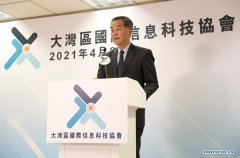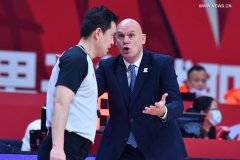IOC provides framework for international federations to develop their own eligibility criteria for transgender, intersex athletes
via
November 16, 2021, 8:29 PM
5 min read
Share to FacebookShare to TwitterEmail this articleIn a much anticipated announcement of updated policy recommendations for transgender and intersex athlete participation, the International Olympic Committee on Tuesday announced a new framework for individual international federations to develop their own eligibility criteria, instead of a blanket policy.
The new guidance replaces the previous 2015 consensus statement and is a departure from previous iterations of IOC policy governing transgender and intersex athlete participation, which was uniform across sports and utilized testosterone levels to determine eligibility for women's sports. It does not require international federations to adopt specific policies, but rather focuses on the process of policy development.
"The framework is not legally binding," said IOC director of the athletes' department Kaveh Mehrabi. "What we are offering to all the international federations is our expertise and a dialogue, rather than jumping to a conclusion. This is a process that we have to go through with each federation on a case by case basis and see what is required."
The new framework focuses on 10 principles: inclusion, prevention of harm, non-discrimination, fairness, no presumption of advantage, evidence-based approach, primacy of health and bodily autonomy, stakeholder-centered approach, right to privacy and periodic reviews. International federations developing their eligibility criteria are instructed to consider all 10 of the principles holistically, rather than picking and choosing some over others.
"As with any set of guidelines, the success of this new framework in ensuring a safe and welcoming environment within the Olympic movement will largely depend on the education and implementation process with national governing bodies, international federations, and other key stakeholders," Athlete Ally director of policy and programs Anne Lieberman said in a statement.
In developing this new guidance, the IOC consulted with over 250 athletes and stakeholders across multiple fields, sports and countries. Those consulted included transgender and intersex athletes, international federations, cisgender athletes, medical professionals and scientists, among others.
"Overall, I think there is much to like in the new IOC framework that pertains to transgender athletes," said Joanna Harper, the visiting fellow for transgender athletic performance at Loughborough University in Loughborough, England. "However [the no presumption of advantage and evidence-based approach principles] are problematic for me. There is no doubt that transgender women are on average taller, bigger and stronger than cisgender women and that these are advantages in many sports.
"Also suggesting that sports organizations need to have robust and peer reviewed research before placing any restrictions on transgender athletes is unreasonable. Such research would take years or perhaps decades to complete. Sports governing bodies need to make decisions now, and it is not unreasonable to place some restrictions on trans women in elite level sports."
The IOC also emphasized its ongoing commitment to research when it comes to transgender and intersex athletes. The science on the topic is still nascent and being developed.
"It's very important that we broaden the evidence base," said IOC medical and scientific director Richard Budgett. "There is some interesting ongoing research that needs to come to conclusion, and that will give us much more information about performance, which is the issue that is really key to determining eligibility."
The IOC first adopted a position on transgender athlete participation ahead of the 2004 Athens Olympics, which required surgery for transgender athletes if they wished to compete in a manner consistent with their gender identity. Those guidelines were updated in 2015, removing the surgery requirement, but retaining a testosterone level threshold of 10 nmol/L for transgender women wanting to compete in the women's category.
The Tokyo Olympic Games were the first to see publicly out transgender athletes compete. Laurel Hubbard, a weight lifter from New Zealand, and Chelsea Wolfe, an alternate on the United States BMX team, became the first transgender women to qualify for the Olympics. Canadian soccer player Quinn and American skateboarder Alana Smith became the first non-binary athletes to compete at the Olympics.








